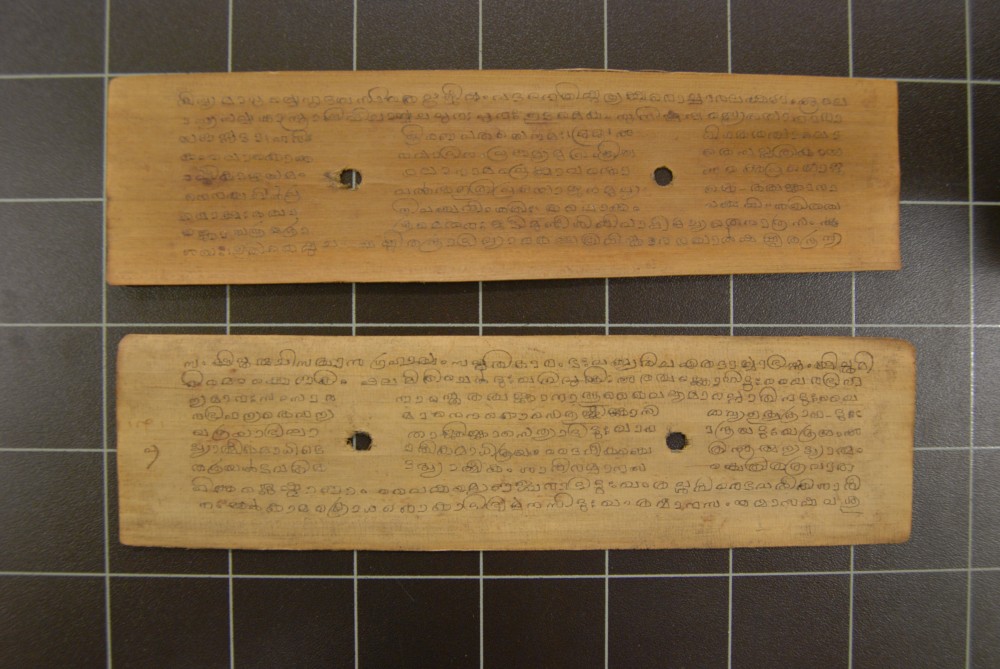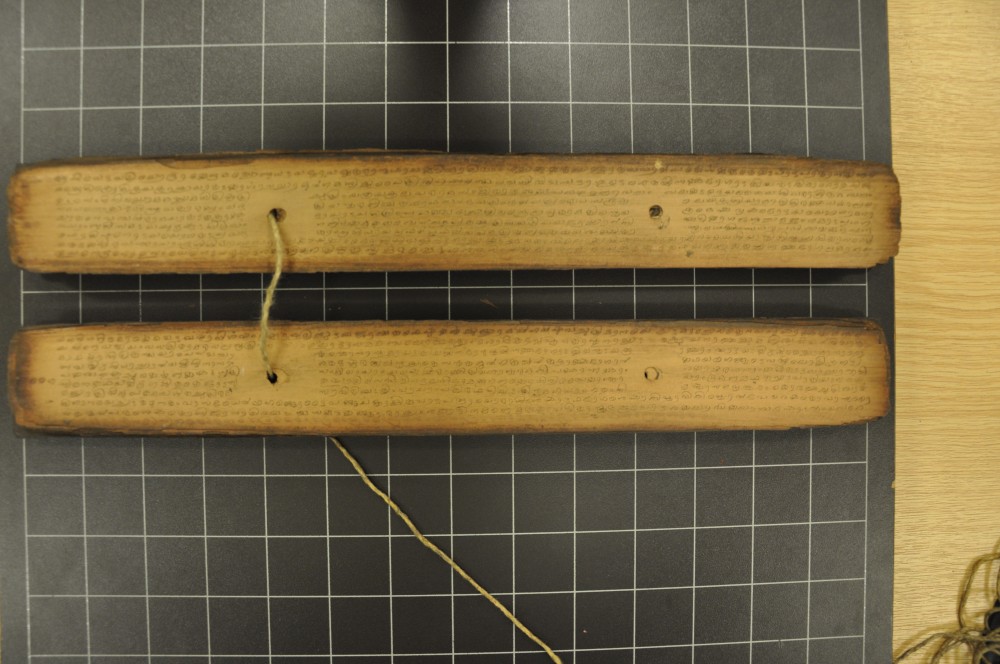South Indian Sanskrit Manuscripts now catalogued online
Records for one of the lesser-known sets of manuscripts in the RAS have now been added to the online catalogue. Kathy Lazenbatt, who was the Society’s Librarian between 2004 and 2014, recently added over 200 records describing the palm leaf manuscripts of the South Indian Sanskrit Manuscript Collection. Most of these manuscripts came from the collection of Charles M. Whish (1795-1833), an East India Company scholar-administrator who worked in South India from 1812 until his death in 1833. Around two dozen more South Indian palm leaf manuscripts in Sanskrit are included in the collection, although it is not clear whether these came from Whish or not.

In 1902 the Society published A catalogue of South Indian Sanskrit manuscripts (especially those of the Whish collection) belonging to the Royal Asiatic Society of Great Britain and Ireland, compiled by Moriz Winternitz, and it is from this that the online records have been created. The manuscripts cover a wide range of subjects and genres, such as Vedic philosophy, classical literature, grammar, the epics, the puranas, astronomy, and astrology. Winternitz remarks that although they are “not distinguished by great age, there are many rare and valuable MSS. among them”. Reflecting his own interests, he then highlights the texts from the distinct South Indian recension of the Mahabharata as being perhaps the most important group within the collection.
Whish himself had a particular interest in the development of mathematics in Kerala. His paper ‘On the Hindú Quadrature of the Circle, and the Infinite Series of the Proportion of the Circumference to the Diameter Exhibited in the Four Sástras, the Tantra Sangraham, Yucti Bháshá, Carana Padhati, and Sadratnamála’ was published posthumously in the Transactions of the RAS in 1834. He argued that Indian mathematicians, independently of Europeans, had discovered ways of approximating the value of π (pi), and that the Keralan mathematician Madhava had by around 1400 CE developed powerful solutions to problems which Europeans were only able to solve over 200 years later, with the discovery of calculus in the mid-seventeenth century.

For an interesting account of Whish’s ground-breaking and, at that time, controversial work, see http://www-history.mcs.st-andrews.ac.uk/Biographies/Whish.html, as well as a blog post here: http://maddy06.blogspot.co.uk/2016/05/charles-whish-at-calicut-and-madhava.html
In addition to the South Indian Sanskrit manuscripts, the Society also holds a collection of Whish’s papers, consisting mainly of paper copies of South Indian manuscripts in Malayalam script; as well as some notebooks. This paper collection particularly relates to Whish’s interests in mathematics, astronomy, and astrology.
To find records for the South Indian Sanskrit Manuscript Collection, visit our online catalogue here and use the search phrase “South Indian Sanskrit”, and set either Types or Collections to “Manuscripts”. A digital copy of the Winternitz catalogue can be found at http://tinyurl.com/j3tkdwj.
Earlier this week, the Society published its lecture series for the 2017-2018 session. This starts next Thursday, 12 October, at 6.30pm with a lecture by Russell Harris (Institute of Ismaili Studies) on “A Journal of Three Months’ Walk in Persia in 1884 by Captain John Compton Pyne”. As with most of our events, this lecture is free and open to all, and we hope you will be able to join us.
